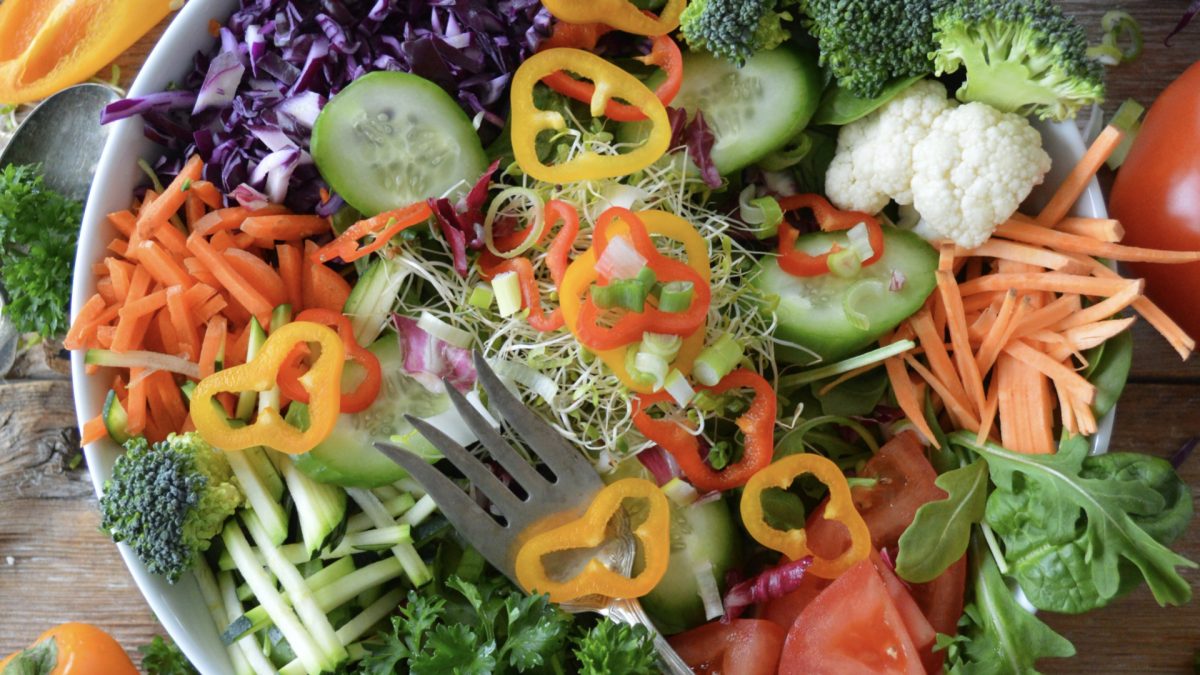Within hours of eating an unhealthy meal, we can get a spike in inflammation, crippling our artery function, thickening our blood, and causing a fight-or-flight nerve response. Thankfully, there are foods we can eat at every meal to counter this reaction.
Standard American meals rich in processed junk and meat and dairy lead to exaggerated spikes in sugar and fat in the blood, as you can see at 0:13 in my video How to Prevent Blood Sugar and Triglyceride Spikes after Meals. This generates free radicals, and the oxidative stress triggers a biochemical cascade throughout our circulation, damaging proteins in our body, inducing inflammation, crippling our artery function, thickening our blood, and causing a fight-or-flight nerve response. This all happens within just one to four hours after eating a meal. Worried about inflammation within your body? One lousy breakfast could double your C-reactive protein levels before it’s even lunchtime.
Repeat that three times a day, and you can set yourself up for heart disease. You may not even be aware of how bad off you are because your doctor is measuring your blood sugar and fat levels while you’re in a fasting state, typically drawing your blood before you’ve eaten. What happens after a meal may be a stronger predictor of heart attacks and strokes, which makes sense, since this is where most of us live our lives—that is, in a fed state. And it’s not just in diabetics. As you can see at 1:30 in my video, if you follow non diabetic women with heart disease but normal fasting blood sugar, how high their blood sugar spikes after chugging some sugar water appears to determine how fast their arteries continue to clog up, perhaps because the higher the blood sugars spike, the more free radicals are produced.
So, what are some dietary strategies to improve the situation? Thankfully, “improvements in diet exert profound and immediate favorable changes…,” but what kind of improvements? “Specifically, a diet high in minimally processed, high-fiber, plant-based foods such as vegetables and fruits, whole grains, legumes, and nuts,”—antioxidant, anti-inflammatory whole plant foods—“will markedly blunt the post-meal increase” in sugar, fat, and inflammation.
But what if you really wanted to eat some Wonder Bread? As you can see at 2:23 in my video, you’d get a big spike in blood sugar less than an hour after eating it. Would it make a difference if you spread the bread with almond butter? Adding about a third of a cup of almonds to the same amount of Wonder Bread significantly blunts the blood sugar spike.
In that case, would any low-carb food help? Why add almond butter when you can make a bologna sandwich? Well, first of all, plant-based foods have the antioxidants to wipe out any excess free radicals. So, nuts can not only blunt blood sugar spikes, but oxidative damage as well. What’s more, they can even blunt insulin spikes. Indeed, adding nuts to a meal calms both blood sugar levels and insulin levels, as you can see at 3:02 in my video. Now, you’re probably thinking, Well, duh, less sugar means less insulin, but that’s not what happens with low-carb animal foods.
As you can see at 3:23 in my video, if you add steamed skinless chicken breast to your white rice, you get a greater insulin spike than if you had just eaten the white rice alone. So, adding the low-carb plant food made things better, but adding the low-carb animal food made things worse. It’s the same with adding chicken breast to mashed potatoes—a higher insulin spike with the added animal protein. It is also the same with animal fat: Add some butter to a meal, and get a dramatically higher insulin spike from some sugar, as you can see at 3:45 in my video.
If you add butter and cheese to white bread, white potatoes, white spaghetti, or white rice, you can sometimes even double the insulin reaction. If you add half an avocado to a meal, however, instead of worsening, the insulin response improves, as it does with the main whole plant food source of fat: nuts.
I’ve covered the effect adding berries to a meal has on blood sugar responses in If Fructose Is Bad, What About Fruit?, and that raises the question: How Much Fruit Is Too Much?
Vinegar may also help. See Can Vinegar Help with Blood Sugar Control?.
Perhaps this explains part of the longevity benefit to nut consumption, which I discuss in Nuts May Help Prevent Death.
I also talk about that immediate inflammatory reaction to unhealthy food choices in Best Foods to Improve Sexual Function.
Surprised by the chicken and butter reaction? The same thing happens with tuna fish and other meat, as I cover in my video Paleo Diets May Negate Benefits of Exercise.
Also check:
In health,
Michael Greger, M.D.
PS: If you haven’t yet, you can subscribe to my free videos here and watch my live presentations:
- 2019: Evidence-Based Weight Loss
- 2016: How Not To Die: The Role of Diet in Preventing, Arresting, and Reversing Our Top 15 Killers
- 2015: Food as Medicine: Preventing and Treating the Most Dreaded Diseases with Diet
- 2014: From Table to Able: Combating Disabling Diseases with Food
- 2013: More Than an Apple a Day
- 2012: Uprooting the Leading Causes of Death
